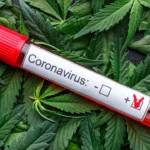
What is the difference between eating and smoking Marijuana? Leave a comment
People often ask if there is much of a difference between smoking Marijuana and eating it. It is important to firstly answer this: Yes, there is a major difference in effects when Marijuana is consumed vs smoked. Eating can not only be far more intense and powerful of a high but also much longer in duration. We will elaborate on the specifics of how the high feels with both methods of consumption but first let’s talk about all the different ways people consume it and what is the most preferred method.
Cannabis can be consumed in various ways, offering different methods to experience its effects:
Smoking: Smoking cannabis involves igniting the plant material and inhaling the smoke. The traditional methods include rolling a joint or a blunt, which typically involve wrapping cannabis in rolling paper or a tobacco leaf. You can also use pipes, such as glass pipes or chillums, which provide a more compact and portable option. Bongs and water pipes are another popular choice, as they filter the smoke through water for a smoother hit.
Vaporizing: Vaporizers heat the cannabis to a temperature that releases the active compounds, producing a vapor that can be inhaled. Vaporizing is considered a healthier alternative to smoking because it eliminates the combustion process, reducing the intake of harmful byproducts.
Edibles: Edibles refer to food or beverage items that have been infused with cannabis extracts or oils. When consumed, they offer a more prolonged and potent experience compared to smoking or vaping cannabis. Edibles are available in a wide range of forms, such as cookies, brownies, gummies, chocolates, beverages, and more. When consuming edibles, it’s important to start with a low dosage and wait for the effects to kick in before consuming more, as the onset can be slower than smoking or vaping.
Sublingual products: Sublingual products are a form of cannabis consumption where cannabis extracts or oils are placed under the tongue. Through this method, the substances are absorbed directly into the bloodstream. This method bypasses the digestive system, allowing for faster onset compared to edibles. Sublingual products include tinctures, sprays, and lozenges.
Topicals: Cannabis-infused topicals are products designed to be applied to the skin, such as lotions, balms, and oils. They are primarily utilized to provide localized relief from pain, inflammation, or skin conditions. Unlike other forms of cannabis consumption, topicals generally do not induce psychoactive effects.
Eating vs Smoking Weed: Consider the Differences

Absorption:
Eating – If you have experienced consuming edibles, you may be aware of the significant difference in onset time compared to other methods. It takes a while before the effects are felt, but once they kick in, they can be quite potent. This delay occurs because when cannabis is ingested, the THC is metabolized by the liver, transforming it into a more potent metabolite known as 11-hydroxy-THC. This metabolite has a longer half-life, leading to a more intense and prolonged experience overall.
Smoking – In contrast, when cannabis is smoked, THC swiftly reaches the brain through the alveoli in the lungs, resulting in a rapid onset of the high. Within minutes of smoking, the effects are typically felt due to the quick absorption of THC into the bloodstream through inhalation.
Onset:
Smoking – As mentioned earlier, the variation in onset between smoking and consuming cannabis edibles can significantly impact the overall experience. When smoking, the immediate effects experienced after the first inhalation allow for better estimation of the THC intake. This enables users to gauge their consumption and determine when to pause or take a break, providing a greater sense of control over the situation. This ability to assess the effects in real-time enhances the ability to manage the cannabis experience effectively.
Eating – In contrast, the situation differs with edibles as they typically take around an hour or more to take effect. During the initial half-hour or so, there is often an illusion of “not feeling anything,” which might lead one to consume more. However, this can be problematic, particularly for those who are new to cannabis. Overconsumption of edibles can result in an overwhelming and uncomfortable experience. It is crucial to exercise caution and refrain from consuming additional doses prematurely when starting your cannabis journey. Patience and responsible consumption are key when it comes to edibles.
Duration:
Smoking – When smoking cannabis, it’s important to keep in mind that the effects are immediate but relatively short-lived. After that initial inhalation, you can anticipate feeling relaxed, euphoric, or even experiencing a strong desire to stay put on your couch for approximately one to two hours before the effects begin to diminish. If you desire to maintain the buzzed sensation, a few additional hits can transport you back to that heightened state of consciousness you previously experienced.
Eating – Edibles, on the other hand, provide a different experience. Once the effects kick in, be prepared to embark on a prolonged journey that can last anywhere from four to eight hours. Even experienced cannabis enthusiasts, such as Snoop Dogg, often tend to avoid consuming edibles because they feel that edibles lack a clear “off button” due to their long-lasting effects. It is crucial to approach edibles with caution and be mindful of their potency and duration to ensure a comfortable and enjoyable experience.
Potency:
Eating – Consuming cannabis through edibles can result in a significantly stronger high compared to smoking. This disparity is attributed to the way THC is processed by the body. As mentioned earlier, when THC is ingested and processed by the stomach and liver, it metabolizes into 11-hydroxy-THC. This metabolite exhibits a much higher affinity for CB1 receptors in the brain, leading to a more potent effect. However, when it comes to potency, individual tolerance plays a crucial role. While some individuals may feel perfectly fine after consuming an entire pot brownie, others may experience a sensation closer to tripping even after consuming just a small portion. To prevent overwhelming effects, it is crucial to be mindful of individual tolerance levels and begin with a conservative dosage when consuming edibles. Being aware of one’s personal limits ensures a more controlled and enjoyable experience.
Smoking –
Smoking cannabis and consuming edibles produce distinct effects due to the different processes involved. Cannabis flowers contain THCA, which is converted into THC when exposed to heat through decarboxylation. When smoked, this newly formed THC enters the bloodstream through the lungs and binds to CB1 receptors in the brain.
Compared to edibles, smoked cannabis has a much faster onset of effects. This allows users to have greater control over their experience. They can take it one toke at a time, gradually reaching their desired level of intoxication. While certain users may prefer a mellow cannabis experience, others may choose more intense encounters by utilizing large dabs, moon rocks, or concentrates that can match the potency of edibles. The versatility in smoking methods provides a wide range of experiences to cater to individual preferences.


Our deep love of plants and fascination with Cannabis has enabled over 25 years of successful small scale Marijuana cultivation from indoor hydroponics, greenhouses and outdoor growing set-ups.
As Cannabis laws around the world change, *we support the movement toward freedom of choice for responsible, consenting adults who wish to experience the joy and wonder of growing a Cannabis plant.






